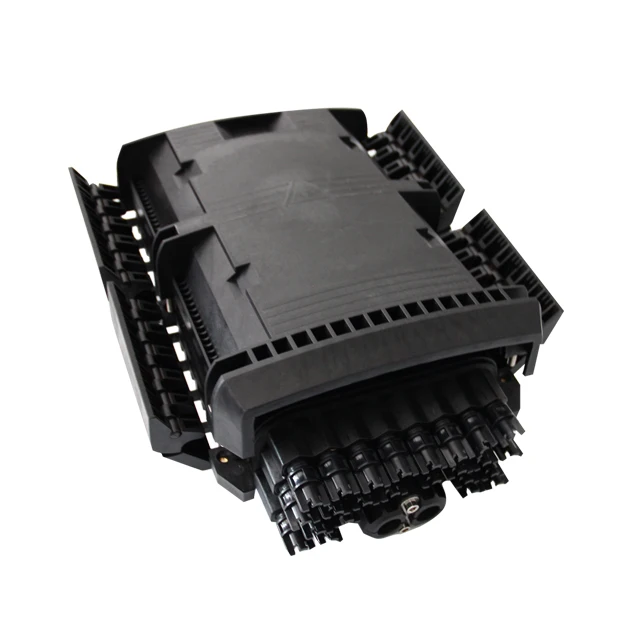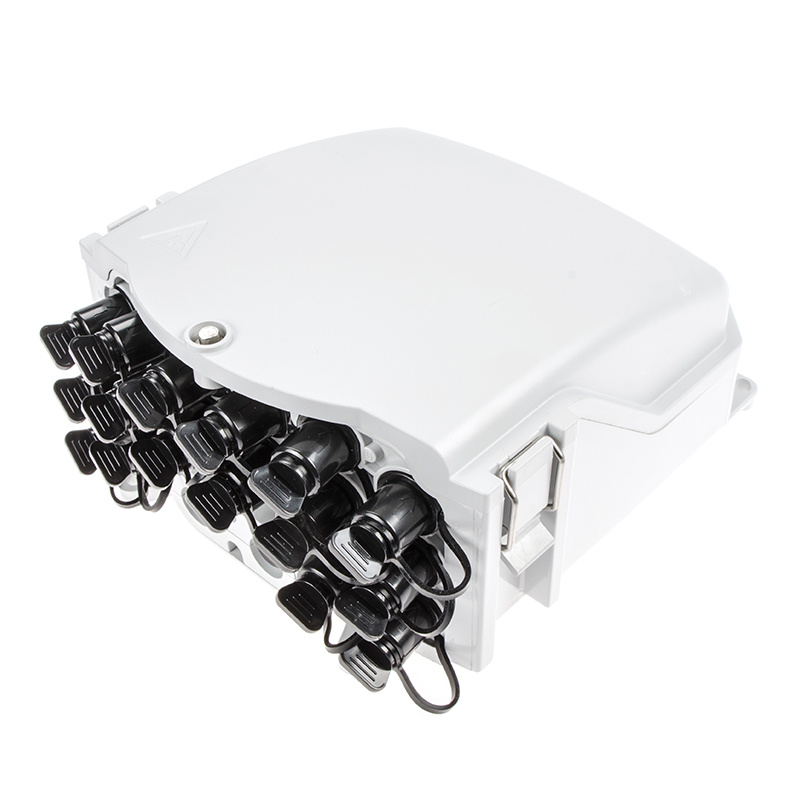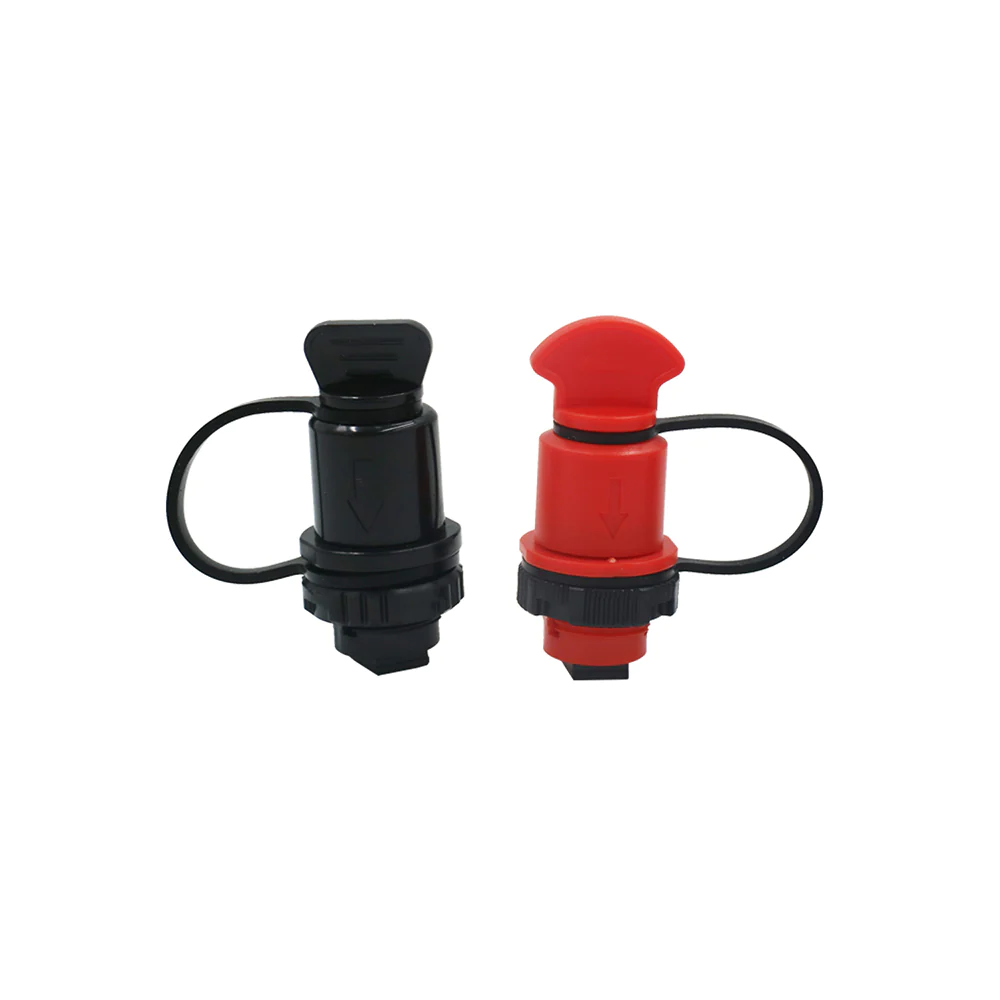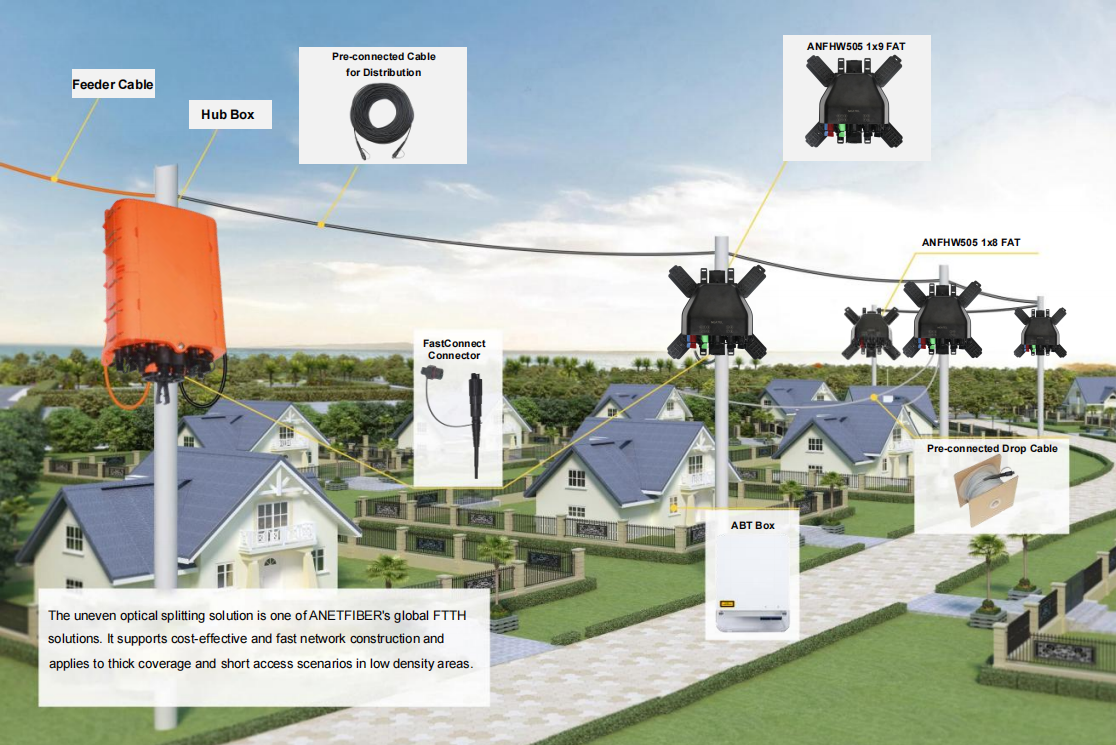Top 3 FTTH Fibertech Tips for 4G Networks

Fiber to the Home (FTTH) technology revolutionizes high-speed internet access by delivering unmatched speed and reliability, essential for enhancing both 4GNetwork and 5GNetwork performance. With FTTH, you enjoy symmetrical upload and download speeds, supporting up to 10 Gbps, which is crucial for bandwidth-intensive applications like 4K video streaming and cloud computing. As you explore telecomsolutions, practical tips for optimizing FTTH can significantly boost your 4GNetwork's efficiency. By understanding fibertech and selecting the right dropcable, you ensure a seamless connection from the fiberbox to your home. Additionally, utilizing an Optical Distribution Box (ODB) and Fiber Termination Box (FTB) can further enhance the management and distribution of opticalsignal within your network.
Selecting the Right Type of FTTH Drop Cable
Choosing the right FTTH Drop Cable is crucial for optimizing your 4G network's performance. Each type of drop cable offers unique features and benefits, tailored to specific installation environments. Let's explore the different types of drop cables and their applications.
Indoor FRP Drop Cables
Features and Applications
Indoor FRP (Fiber Reinforced Plastic) drop cables are designed for use within buildings. These cables feature a simple structure and lightweight design, making them easy to install. The NEXCONEC FTTH Drop Cable includes 1 to 4 individually colored optical fibers, reinforced with FRP strength members. This design provides excellent flexibility and bending performance, ideal for integrated wiring in intelligent buildings and digital communities.
Advantages and Limitations
The primary advantage of indoor FRP drop cables lies in their flexibility and ease of installation. They offer good tensile strength and resistance to lateral pressure due to their unique V-groove structure. However, their application is limited to indoor environments, as they may not withstand harsh outdoor conditions.
Outdoor Steel Drop Cables
Features and Applications
Outdoor steel drop cables are built to endure external environments. These cables incorporate steel strength members, providing robust support and durability. The UCL Swift’s FTTH Drop Cable features a UV-resistant HDPE jacket, making it suitable for harsh weather conditions. It also includes water-blocking aramid yarns to protect the optical fibers, ensuring reliable performance from the pole to the structure.
Advantages and Limitations
Outdoor steel drop cables excel in durability and weather resistance. They are ideal for installations that require self-support from poles or structures. However, their heavier weight and more complex installation process can be a drawback compared to indoor cables.

Figure-8 Aerial Drop Cables
Features and Applications
Figure-8 aerial drop cables are designed for overhead installations. These cables feature a figure-8 shape, which includes a messenger wire for added support. This design allows the cable to be suspended between poles without sagging. The FTTH Drop Fiber Cable is an example of a cable that offers strong tensile strength and a low-smoke halogen-free flame-retardant sheath, suitable for aerial applications.
Advantages and Limitations
The main advantage of figure-8 aerial drop cables is their ability to span long distances without additional support. They are lightweight and cost-effective, making them a popular choice for aerial installations. However, they may require specialized equipment for installation and maintenance.
By understanding the features and applications of each type of drop cable, you can make informed decisions that enhance your network's efficiency. Selecting the right cable ensures a seamless connection and maximizes the potential of your fibertech solutions.
Importance of Installation Techniques
Proper installation techniques are crucial for ensuring the efficiency and reliability of your FTTH network. By focusing on correct connections and using the right tools, you can maximize the performance of your 4G network.
Ensuring Proper Connections
Fiber Access Point to ONT
Connecting the fiber access point to the Optical Network Terminal (ONT) is a vital step in your FTTH setup. You must ensure that the connection is secure and free from any interference. A well-connected fiber access point guarantees that the opticalsignal travels smoothly to your home, providing a stable internet connection. This step is essential for maintaining high-speed data transfer and reducing latency.
Maximizing Internet Speed and Reliability
To achieve optimal internet speed and reliability, you need to focus on minimizing signal loss. Ensure that all connections are tight and free from dust or debris. Regularly check the fiberbox and other components for any signs of wear or damage. By maintaining these connections, you can enjoy uninterrupted service and make the most of your FTTH network.
Tools and Equipment
Essential Tools for Installation
Having the right tools is essential for a successful FTTH installation. You will need a fiber optic cleaver, a fusion splicer, and a power meter. These tools help you cut, splice, and measure the opticalsignal accurately. A fiber optic stripper and a visual fault locator are also useful for preparing cables and identifying any issues in the network.
Best Practices for Installation
Following best practices during installation ensures a smooth and efficient process. Start by planning the layout of your network, considering the placement of the fiberbox and other components. Use protective gear to handle fiber optics safely. Keep the work area clean and organized to prevent any damage to the cables. Regularly test the connections to ensure they meet the required standards.
By adhering to these installation techniques, you can enhance the performance and reliability of your FTTH network. Proper connections and the right tools are key to maximizing your network's potential, ensuring you enjoy the full benefits of high-speed internet access.
Maintenance and Safety Considerations
Maintaining your FTTH network is crucial for ensuring its longevity and performance. By focusing on the right maintenance practices and safety considerations, you can protect your investment and enjoy uninterrupted service.
Gel-Free Cables
Benefits of Gel-Free Cables
Gel-free cables offer several advantages over traditional gel-filled cables. They are easier to handle and install because they do not require cleaning of sticky gel substances. This feature reduces installation time and labor costs. Gel-free cables also provide better performance in terms of signal integrity. Without gel, the risk of signal attenuation due to moisture ingress is minimized, ensuring a more reliable connection.
Application Scenarios
You can use gel-free cables in various scenarios, especially where quick and clean installations are necessary. They are ideal for environments where space is limited, such as in dense urban areas or inside buildings. Gel-free cables are also suitable for installations that require frequent maintenance or upgrades, as they simplify the process of accessing and modifying the network.

Flame Ratings and Low Smoke Zero Halogen Jackets
Importance of Safety Standards
Safety standards play a vital role in the installation of FTTH networks. Cables with high flame ratings and low smoke zero halogen (LSZH) jackets enhance safety by reducing the risk of fire and toxic smoke emissions. These features are particularly important in residential and commercial buildings, where the safety of occupants is a priority. By adhering to these safety standards, you ensure that your network complies with regulatory requirements and provides a safe environment for users.
Enhancing Safety in Installations
To enhance safety during installations, you should choose cables with appropriate flame ratings and LSZH jackets. These cables help prevent the spread of fire and reduce the release of harmful gases in case of a fire. Additionally, using an Optical Distribution Box and a Fiber Termination Box (FTB) can further improve safety by organizing and protecting the fiber connections. These boxes provide a secure enclosure for the cables, minimizing the risk of damage and ensuring a tidy installation.
By focusing on maintenance and safety considerations, you can optimize your FTTH network for long-term performance. Gel-free cables and adherence to safety standards are key components in achieving a reliable and secure network. Implementing these practices will help you maintain a high-quality connection and protect your investment.
To optimize your 4GNetwork with FTTH technology, focus on three key areas: selecting the right drop cable, employing proper installation techniques, and adhering to maintenance and safety standards. Each tip enhances your network's performance, ensuring you enjoy high-speed internet access. FTTH technology not only boosts your current 4GNetwork but also prepares you for future advancements like the 5GNetwork. By implementing these strategies, you position yourself at the forefront of broadband infrastructure, ready to meet the demands of bandwidth-intensive applications.
See Also
Single Mode vs Multimode Fiber: Which Should You Choose?
Choosing the Right Fiber Splice Enclosure for Outdoor Installations
The Role of MPO Cables in Modern Data Centers
About US
Follow Us
AnetFiber company's main products are indoor and outdoor optical fiber cables, outdoor waterproof pre-connected fiber-to-the-home products, PLC optical fiber splitters, optical fiber jumpers and pigtails, MTP®/MPO high-density big data product solutions, optical fiber field quick connectors and research and development molding, injection molding and production of optical fiber distribution boxes, optical fiber chassis cabinets, the market has expanded to the world, Europe, America, Asia, the Middle East and Latin America.
Address
Shenzhen City, Baoan District, Yanluo Street, Tangxiayong Community, Yangyong Industrial Road, Tonggangda New Energy Vehicle Park 406
Contacts
+86 199 2655 3586

